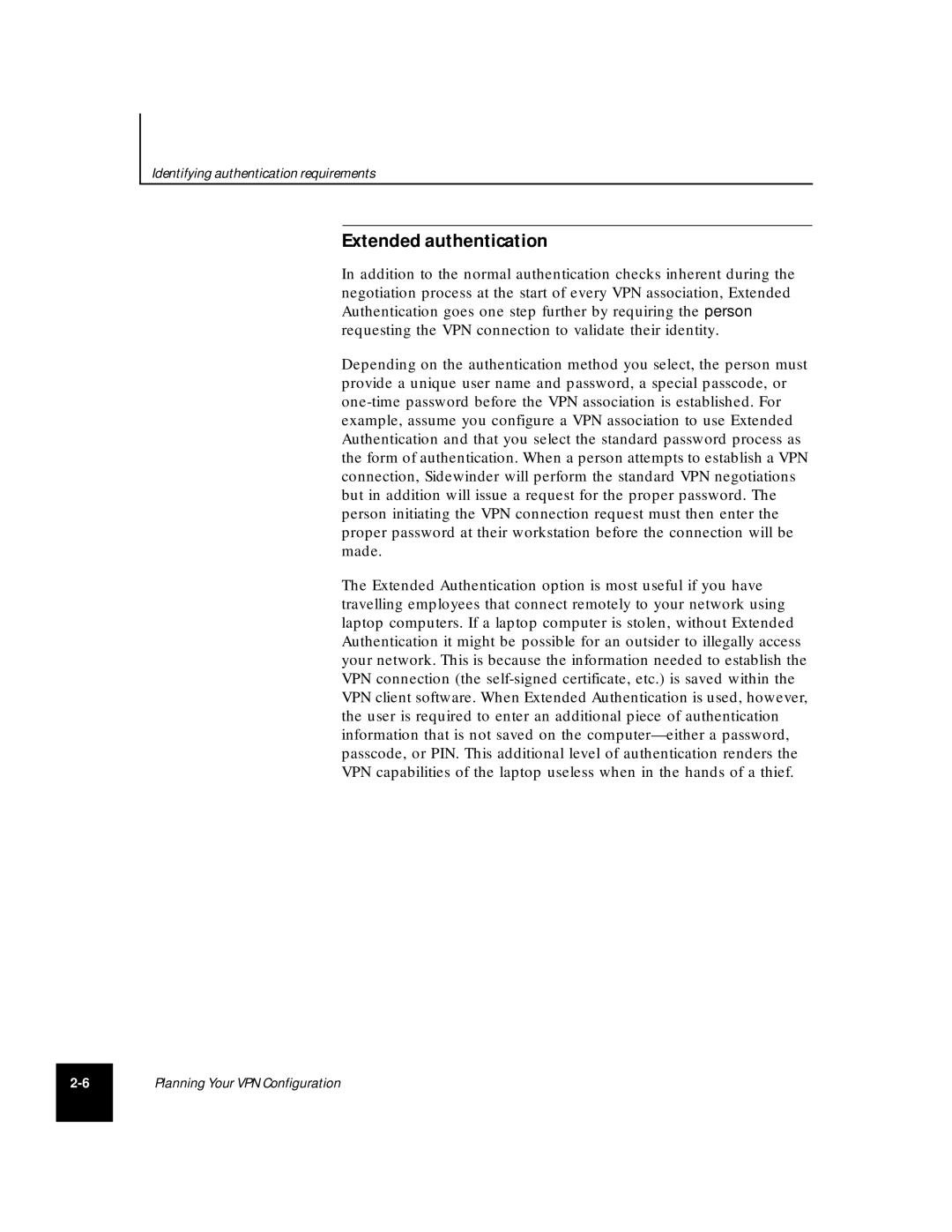
Identifying authentication requirements
Extended authentication
In addition to the normal authentication checks inherent during the negotiation process at the start of every VPN association, Extended Authentication goes one step further by requiring the person requesting the VPN connection to validate their identity.
Depending on the authentication method you select, the person must provide a unique user name and password, a special passcode, or
The Extended Authentication option is most useful if you have travelling employees that connect remotely to your network using laptop computers. If a laptop computer is stolen, without Extended Authentication it might be possible for an outsider to illegally access your network. This is because the information needed to establish the VPN connection (the
Planning Your VPN Configuration
